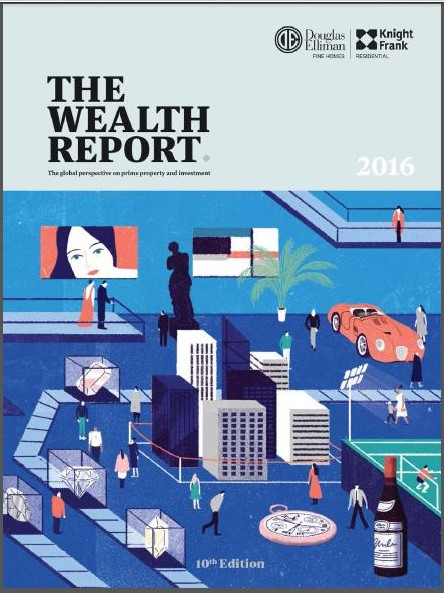 It’s early April, and you’re trying to get in touch with your New York-based board member to schedule a meeting. If you guessed that he’s in Georgia (at the Masters), you’re probably right. Want to know more about where he’ll likely be in May and June?
It’s early April, and you’re trying to get in touch with your New York-based board member to schedule a meeting. If you guessed that he’s in Georgia (at the Masters), you’re probably right. Want to know more about where he’ll likely be in May and June?
Well, here you go: global real estate experts Knight Frank teamed up with NetJets and WINGX Advance to track worldwide private jet migration patterns for the wealthy worldwide. The information they found is illustrated in a cool global event calendar on page 35 of the 2016 Knight Frank Wealth Report.
(Interesting aside: NetJets is the 4th largest airline in the world, including commercial aircraft, just in case you were thinking that your prospects are flying business class. The article hyperlinked in the previous sentence as well as this one gives an idea of what a share costs.)
Why This Report Is Worth Reading
The Knight Frank report is always worth the yearly wait, but this time it’s especially juicy – primarily because of the strategic collaborations they have forged to provide richer detail to their own data, but also because they have expanded the scope of their research to include the merely wealthy (millionaires and deca-millionaires) as well as the traditional ultra high net worth individuals.
For example, in an inspired collaboration with New World Wealth (NWW), the Knight Frank report graphs seasonal movements of people with assets of $10M+ and multiple global residences.
You’d certainly expect there to be a great deal of high-season fluctuation in a hot spot like The Hamptons (it’s 777 percent!), but NWW and Knight Frank found to their surprise that the number of multi-millionaires in London and Paris in July and May (respectively) are more than double their winter month numbers.
Where are the wealthy going during those winter months? According to their research, chances are they are headed for Davos and Miami.
And where are they buying their next home? If you guessed Vancouver you’d be right; Vancouver leads the Prime International Residential Index (PIRI) with prices in the prime real estate market accelerating 25% last year. Low supply, high foreign demand, and a weakened Canadian dollar are the top three reasons why.
Philanthropy
For us in the Third Sector, the questions that loom large are how the wealthy view and value their philanthropic legacy. The Knight Frank report includes the personal perspectives of four philanthropists: Lynn Forester de Rothschild (interviewed in depth), Dr. Stephen Riady, Muna Easa Al Gurg, and Tony Elumelu. These first-hand reports provide valuable insight into high net wealth individuals’ motivations for giving.
The chief motivation cited for the ultra wealthy to be philanthropic is a sense of personal fulfillment. In Middle Eastern countries, religion was equally as strong a motivator.
“However,” the report goes on to say, “the way the wealthy are giving is changing. The Zuckerbergs, for example, have created a more flexible limited liability company, not a traditional charitable foundation, to oversee their endeavours.
‘This is indicative of a wider trend that we have seen across our client base,’ says Tom Hall, Head of Philanthropy Services (UK) at UBS. ‘Not only is philanthropy increasing, so too is the desire to ensure that it is truly effective and actually solving the social and environmental problems of our time.
Philanthropists are becoming increasingly sophisticated in how they structure their giving and investing, with social impact emerging as a key third dimension along with risk and return in every investment decision.’”
According to their money managers, 80% of high net worth individuals plan to continue to increase their philanthropic investments in the next 10 years. Our job is to inspire them and provide that sense of personal fulfillment that they have made an impact.
For Prospect Researchers and Frontline Fundraisers
For those of us who are interested in how the investment portfolios and holdings of UHNWIs stack up, check out lucky page 13 of the report. Considering the current economic climate, I’d have thought that gold would figure much larger in the typical asset portfolio than dead last.
Stop reading this and go download the report already!
It’s a double chocolate fudge sundae of a report, and these are just a few of my favorite highlights. What did you find interesting? Share!
